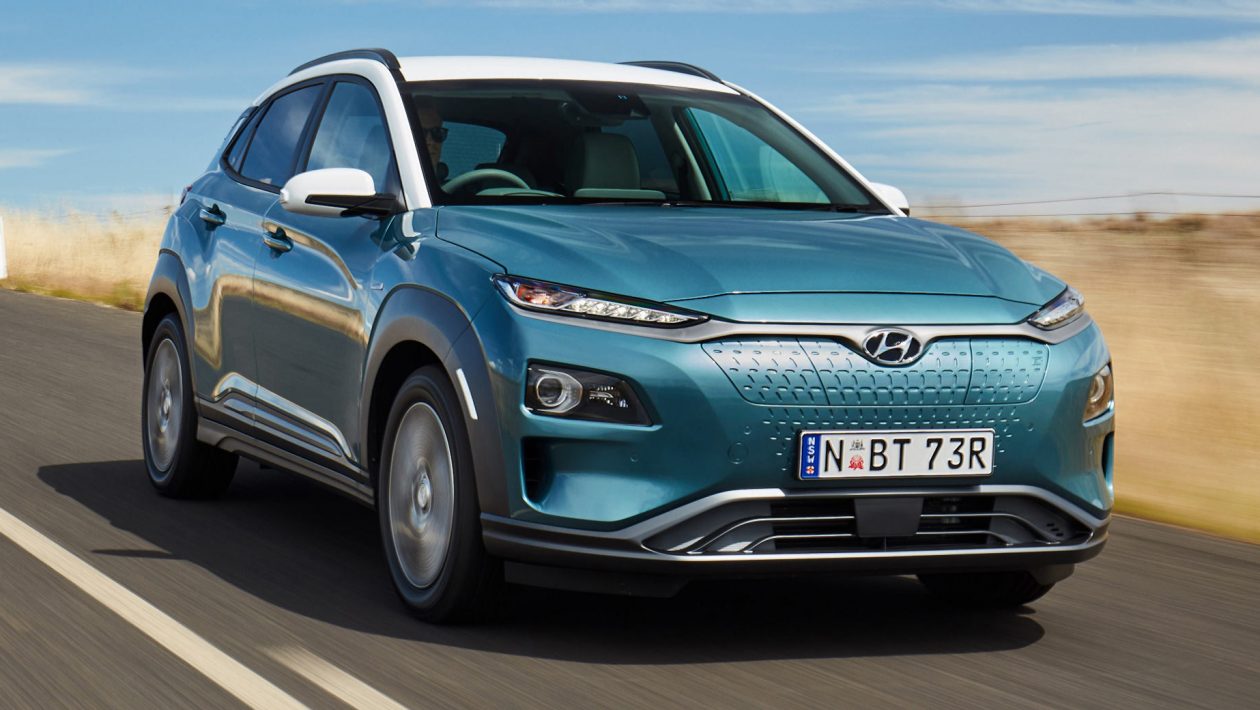The facelifted version of the Hyundai Kona SUV was unveiled in September and now the pure-electric version has been revealed too. It gets similar visual updates because the ICE version with some EV twists along side the feature updates. The powertrain options remain an equivalent but do feature minor improvements and slightly more range.
The facelifted Kona Electric gets the new front fascia with sleeker headlamps and LED daytime running lights but the bumper doesn’t feature a grille for more efficient aerodynamics. it’s a special air dam design also with vertical air vents while the body-coloured wheel arches enhance the Kona EV’s width and stance. round the back, it continues an equivalent split design for the taillamps but the lower section has been redesigned to be bigger and fewer boxy in shape. Overall, the new Kona EV is 40mm longer too but the wheelbase remains an equivalent at 2600mm.
Like all new Hyundais, the facelifted Kona Electric also gets new, bigger displays. albeit the dashboard layout remains unchanged, it now gets the choice of a ten .25-inch touchscreen infotainment system with Bluelink connected car technology. the prevailing 8.0-inch touchscreen infotainment system has been updated to supply wireless compatibility with Android Auto and Apple CarPlay. The Bluelink app also allows Kona EV drivers to remotely start and stop charging of the car when connected to a charger. The digital driver’s display has also been updated with a replacement 10.25-inch screen. Another feature update for the cabin is ambient lighting within the front footwells.
Hyundai continues to supply the Kona Electric with two battery powertrains – the long-range 64kWh option and therefore the 39.2kWh battery pack that’s offered in India too. The performance of both electric motors in both variants unchanged with the torque output at 395Nm and 204PS power within the long-range version while the opposite offers 136PS of power. However, the improved tyres for the 2020 model have helped increase the claimed range from both. The 39.2kWh variant now claims 305km as per the WLTP cycle (Worldwide Harmonised Light Vehicles Test Procedure) which is a rise of 5km over the outgoing model. Meanwhile, the 64kWh variant sees a rise of 14km with a WLTP-certified range of 484km. The ARAI testing cycle varies greatly, hence why the 39.2kWh Kona EV in India can claim a variety of 452km. supported the increased range under the WLTP cycle, the 2020 Kona EV would claim a variety of 460km in India.
In terms of charge times, both battery packs are often charged from 10 to 80 per cent in 47 minutes employing a 100kW DC fast charger. The 39.2kWh battery charges at similar speeds from a 50kW DC fast charger while the long-range 64kWh battery takes 64 minutes. A 7.2kW AC charger can charge the essential Kona Electric’s 39.2kWh battery from 10 to 100 per cent in 6 hours while a daily household power socket will take 17 hours.
Other feature-updates for the 2020 Kona Electric include a number of advanced driver assist systems like blind spot collision avoidance, leading departure vehicle alert, safe exit warning and rear cross-traffic collision avoidance. These updates are unlikely to be seen on the India-spec Hyundai electric SUV.
The facelifted Hyundai Kona Electric could arrive in India in late 2021 and that we can expect to ascertain an equivalent pure-electric powertrain within the sort of the Kia Soul EV also . We are likely to continue getting the 39.2kWh battery-pack only with the present model priced from Rs 23.76 lakh (ex-showroom, Delhi). In India, its direct rival is that the MG ZS EV which is cheaper , features a similarly premium feature-set but features a lower claimed range.
